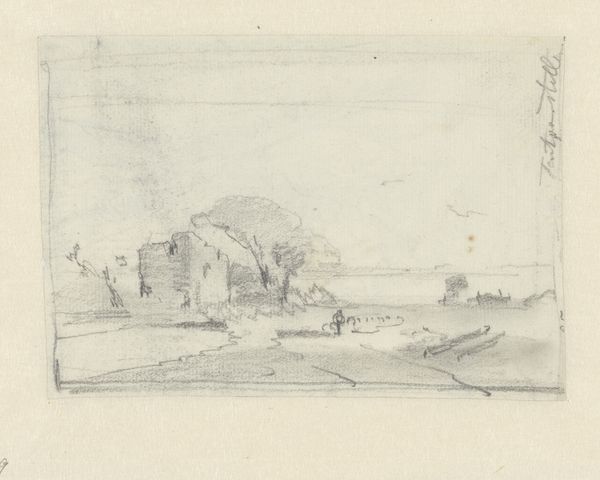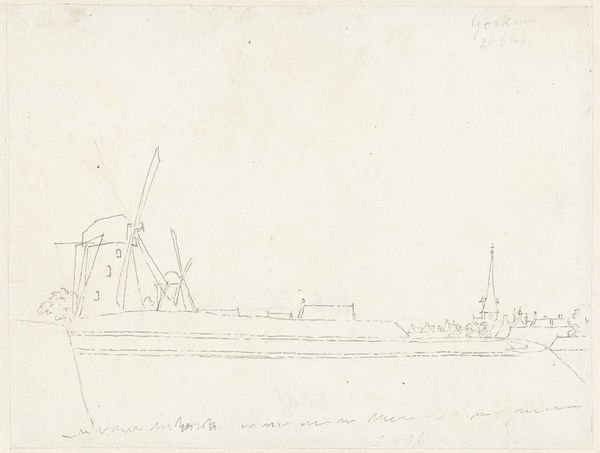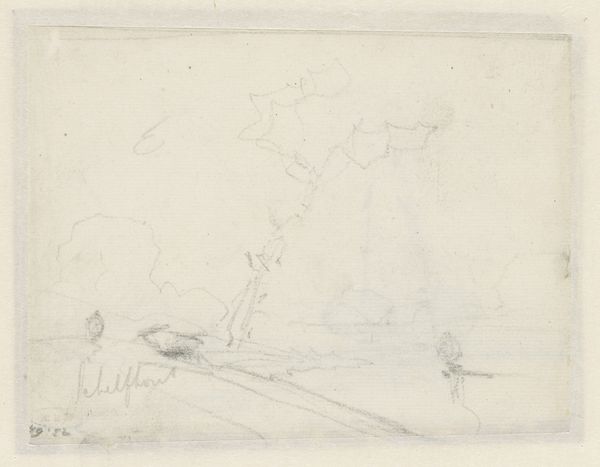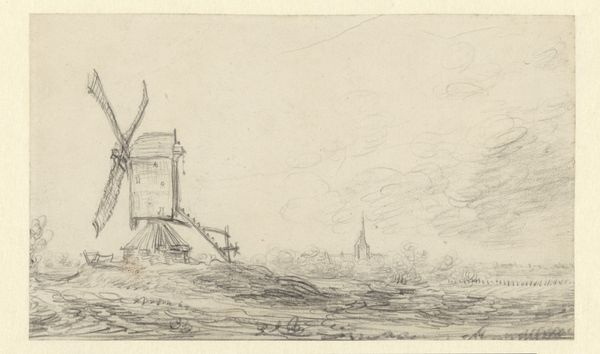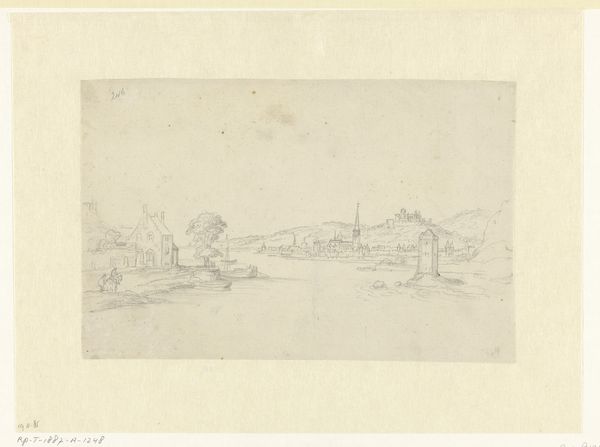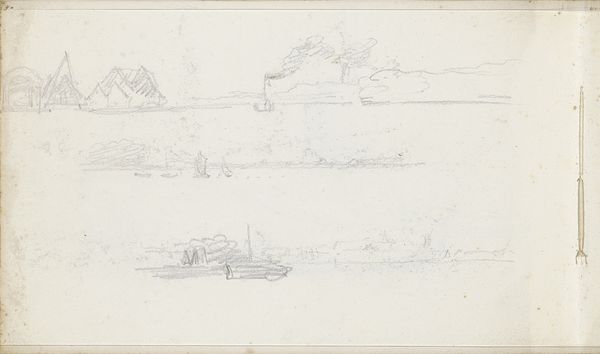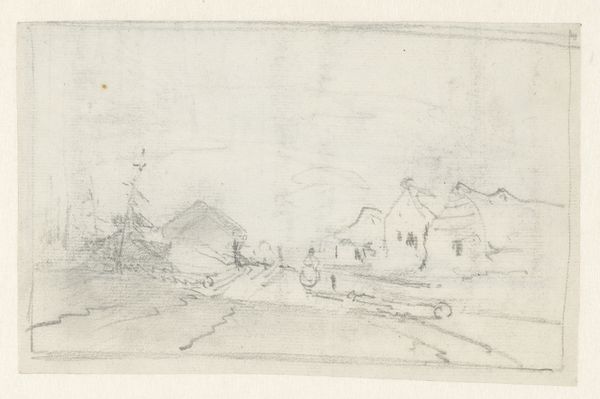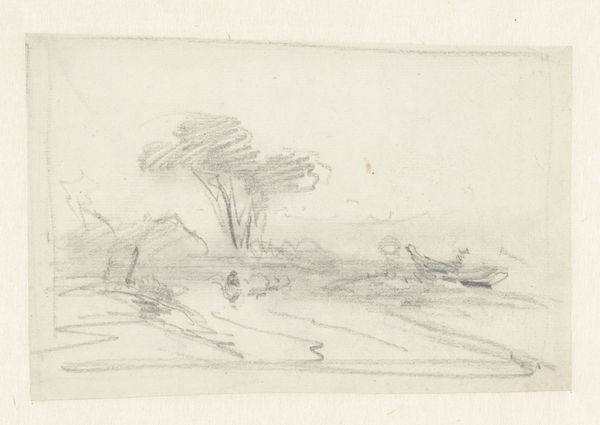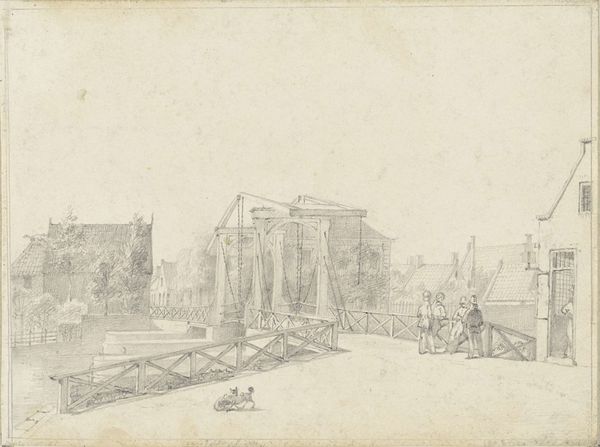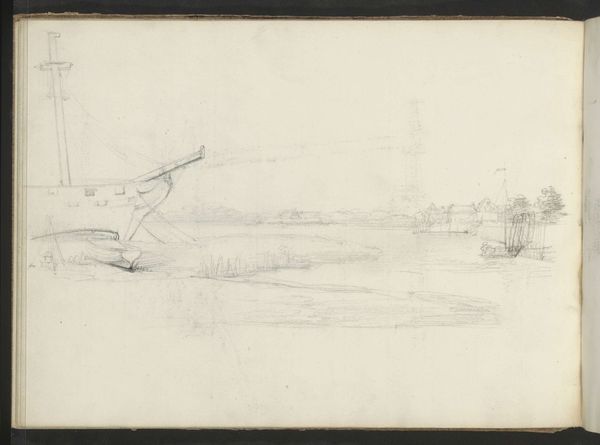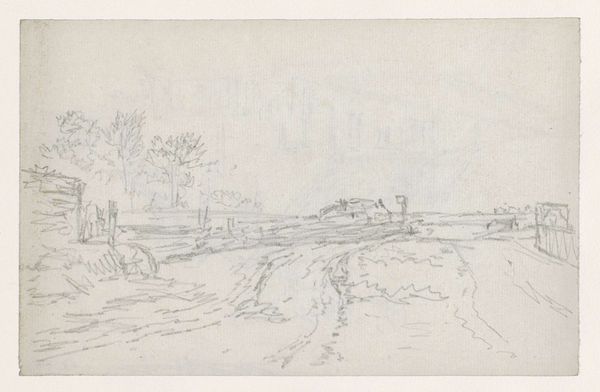
Schets van een landschap met een molen en een stad in het verschiet 1797 - 1870
0:00
0:00
andreasschelfhout
Rijksmuseum
drawing, pencil
#
drawing
#
landscape
#
romanticism
#
pencil
#
realism
Dimensions: height 141 mm, width 204 mm
Copyright: Rijks Museum: Open Domain
Editor: So, this is "Sketch of a Landscape with a Mill and a Town in the Distance," a pencil drawing by Andreas Schelfhout. It's housed here at the Rijksmuseum. The muted tones and quick strokes give it such an airy, dreamlike quality. How do you interpret this work? Curator: For me, this seemingly simple landscape drawing serves as a window into the 19th-century Dutch identity. Landscapes were frequently utilized to create a narrative of a simpler, agrarian ideal that reflected values relating to nationalism, community, and labor. Notice the figure placed centrally in the composition—does this inclusion glorify labor as crucial to building both community and country? What can that placement indicate about the society for whom this drawing would have held meaning? Editor: That's interesting. I was so focused on the composition itself, I hadn't really considered its possible social implications at the time. Curator: Exactly! And let’s think about the mill itself. The Industrial Revolution brought immense socio-economic change, uprooting and changing long-held concepts of social norms, especially concerning land and ownership. Does the prominence of the windmill symbolize Dutch resilience and connection to the land in the face of that change? What social class is glorified with this symbolic building? Editor: I never thought about it like that, in terms of change and resistance. I can see how that applies here. It definitely reframes how I initially perceived the artwork. Curator: Precisely. Examining the artwork this way encourages us to recognize how even seemingly pastoral images can embody nuanced and potentially charged socio-political positions. We may consider Schelfhout's work beyond a simple representation, making it relevant within current discussions about identity and history. Editor: That makes perfect sense. Looking at it now, I understand how much deeper a landscape drawing can be. I appreciate the shift in my understanding of Schelfhout’s work, giving rise to an important topic about social commentary.
Comments
No comments
Be the first to comment and join the conversation on the ultimate creative platform.

